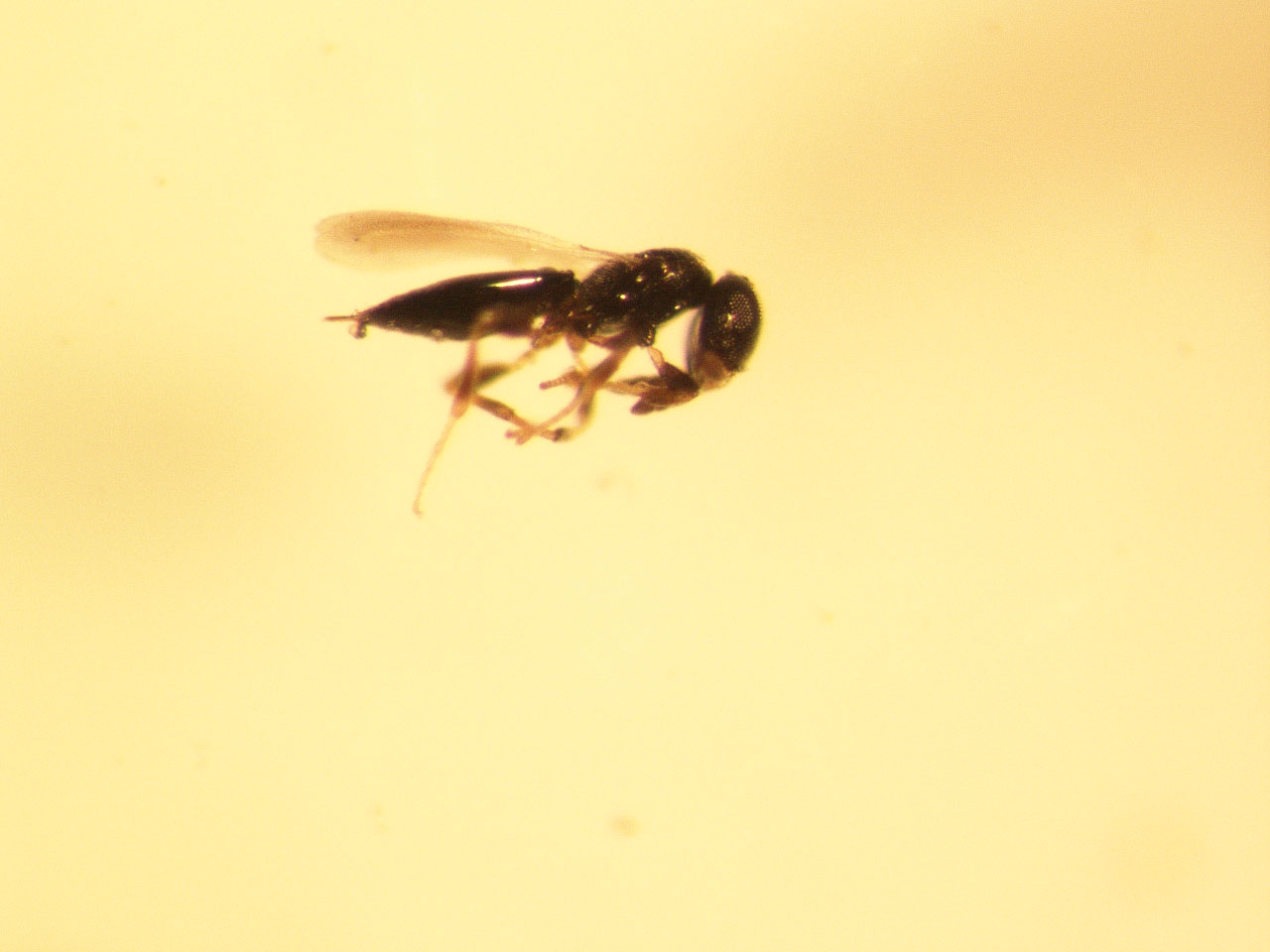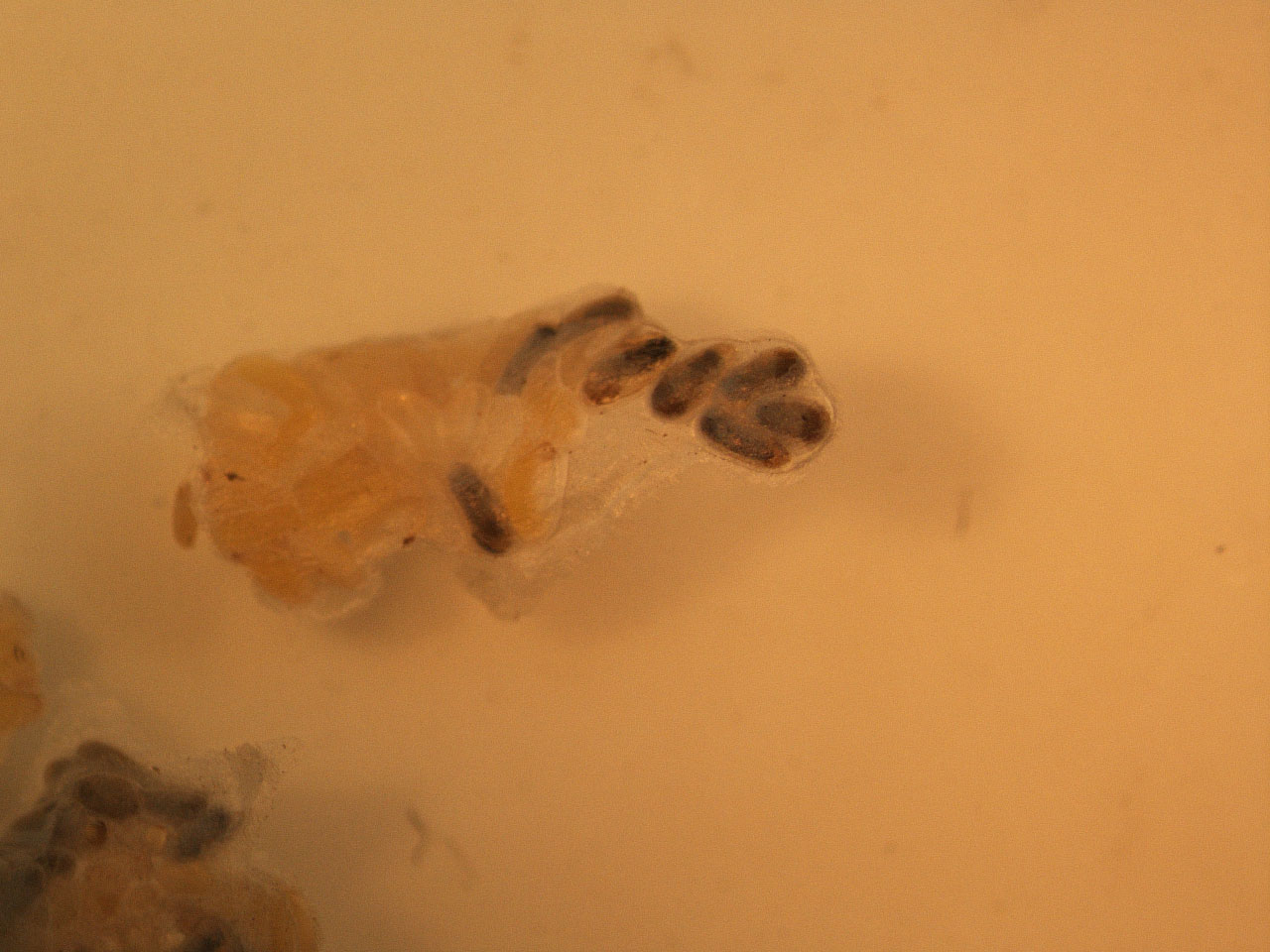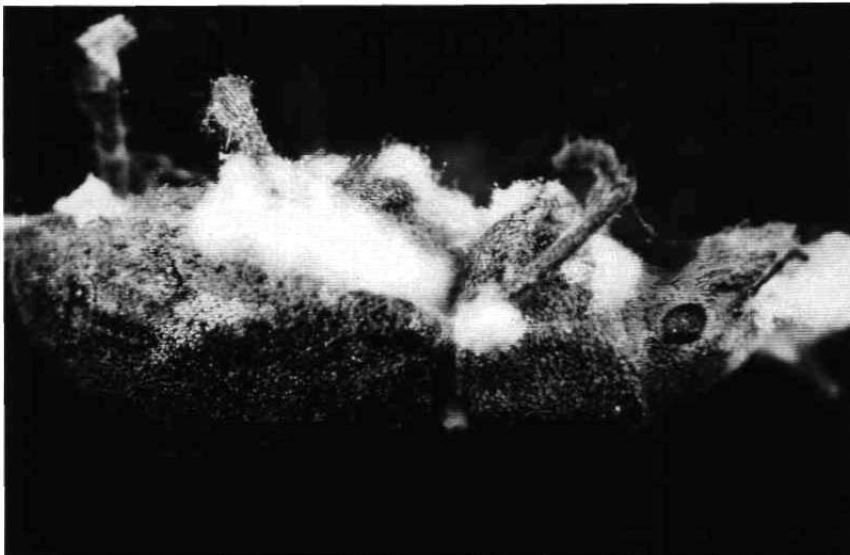
Fuller's rose weevil
Date: 2022 Authors: Jianhua Mo and Sandra Hardy
Description
Size and appearance: adult Fuller’s rose weevils (Pantomorus cervinus) are wingless, grey–brown (Figure 1) and about 8 mm long. Mature larvae are legless, yellow and about 6 mm long.
Life cycle: there is 1 generation a year. Fuller’s rose weevil (FRW) females produce 20–30 eggs glued together in yellowish, papery masses without mating. Eggs are laid under fruit calyces, in bark crevices or in micro-sprinklers under trees. After hatching, the larvae drop, burrow into the soil and feed on citrus roots. Adults emerge from the soil mostly between February and May but can be found all year round.
Habit: the adults chew leaf margins, leaving a serrated edge. Foliage near the trunk or touching the ground is most likely to be damaged.
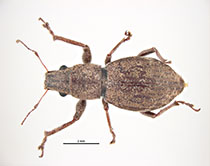
IPM
Damage and risk period: having FRW eggs on fruit is a major quarantine pest of concern to many Asian markets. While the months just before harvest are the highest risk for FRW, it should be managed all year round.
Monitoring: actively monitor from December to May. Shake the foliage of selected trees over a 1 m2 light‑coloured mat and look for any adults (Figure 2). Trees selected for monitoring must be randomly scattered throughout the block (Figure 3).
Leaves showing serrated edge damage on the lower portion of trees could be a sign of adults feeding (Figure 4). Examine low-hanging foliage for signs of feeding damage.
Examine low-hanging fruits near the trunk, looking for egg masses under the calyx (Figure 5).
Threshold: FRW is not a major concern for domestic or non‑quarantine export countries, but there is zero tolerance for quarantine export countries.
Natural predators: Platygastrid parasitoid wasp (Fidiobia citri; Figure 6 and Figure 7), assassin bugs (various species), praying mantises and entomopathogenic fungi (Figure 8) and nematodes (such as Heterorhabditis sp.).
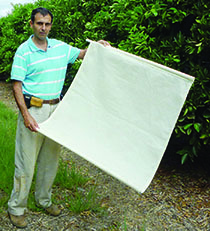

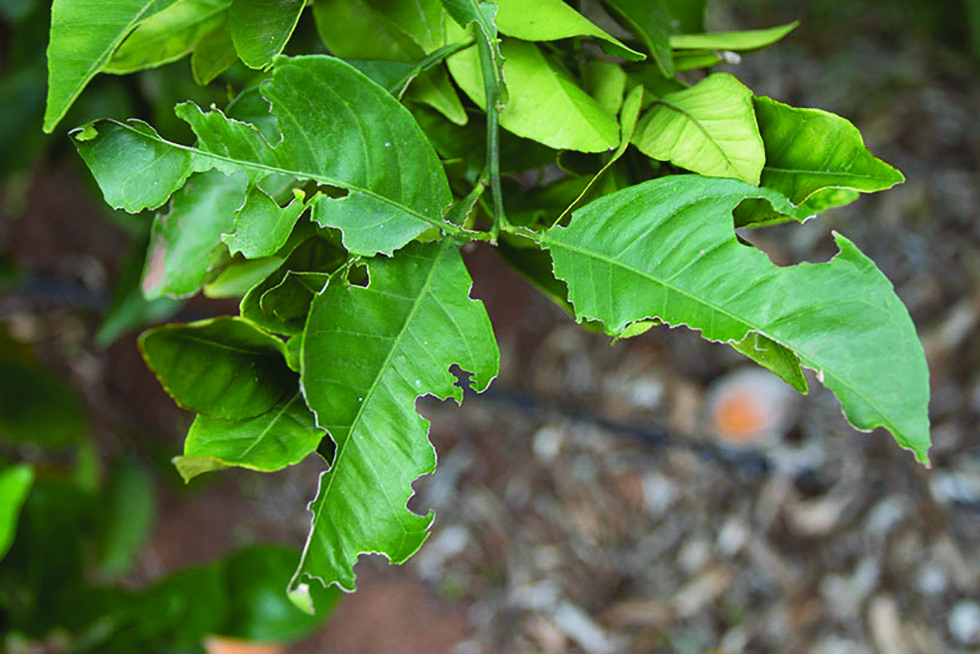
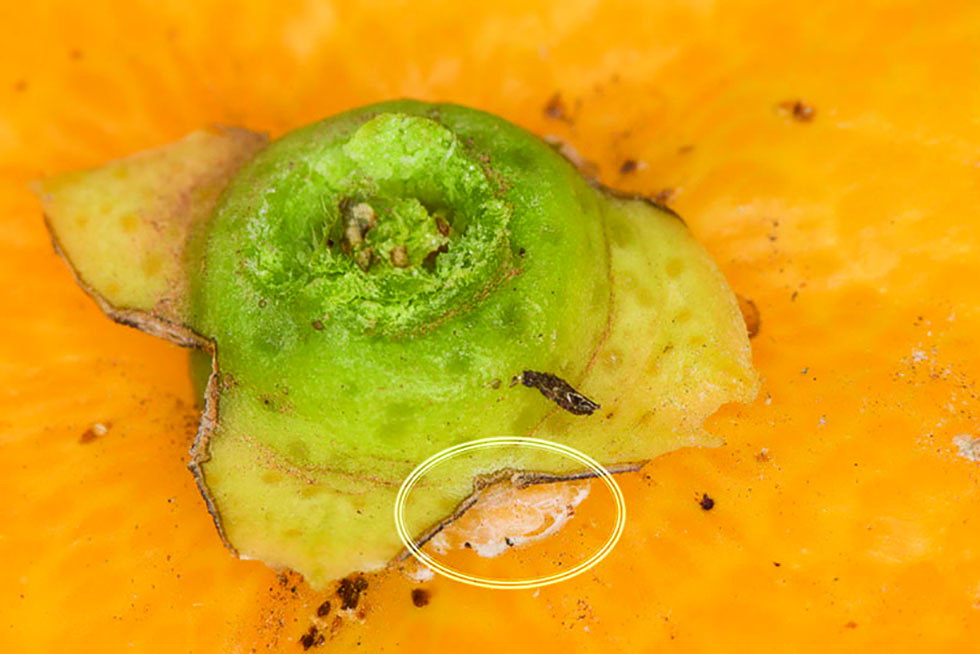
Control measures
Controlling FRW requires a multi‑strategy approach based on orchard hygiene, skirting and weed control as well as chemical control. FRW control is mandatory for quarantine‑sensitive export markets. Some markets demand zero detection during monitoring.
Appropriate actions include pruning the skirts of trees at the end of each season, controlling weeds, and applying sticky bands around the tree trunk.
Trunk band spraying is effective in reducing populations in conjunction with skirting and weed control. However, it can cause outbreaks of secondary pests such as mites and scale insects. Careful monitoring and early intervention of the secondary pests are recommended.
Orchards registered in the Korea, China and Thailand export program should obtain a copy of the Australian citrus to Korea, China and Thailand Integrated Pest Management and packing house controls document on the Citrus Australia website and contact their packer in spring to discuss their management program.
